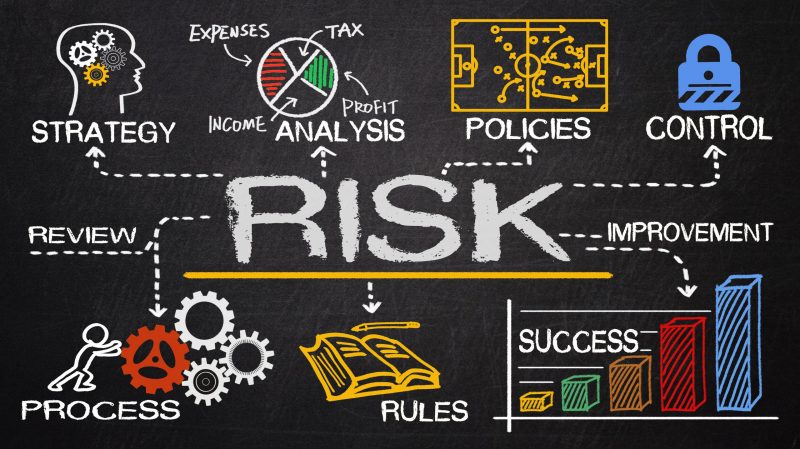Language has surprising overlaps between words. Which is why effective communication focuses just as much on how a message is said versus what is actually said in the message. This is important in safety when determining if a bright sign with images will warn workers about a hazard more clearly than a morning speech or a handout. But this is not always the case. There are situations where understanding the fine points between the definitions of specific terms can create a world of difference.
Risk assessment, risk analysis, and risk management are often used interchangeably to describe the general areas of risk observance and risk resolution. This creates confusion for teams trying to draw clear lines of responsibility for different roles and tasks. Each area has overlap. But each area also has distinct objectives and goals associated with its definition. And understanding what separates each specific area of focus helps organizations stay organized and more precise when handling risk.
Risk Management
Risk management is the most broad of the three terms. It encompasses the entire realm of identifying, evaluating, treating, and monitoring risk. The goal of risk management is to both point out that a risk exists and to produce strategies that address or eliminate that risk. This includes identifying the who, what, where, when, why, and how of a risk with the intention of mitigating the risks’ effects. This is also why “risk management” shows up in the title or primary goal for safety management teams.
Risk Assessment
Risk assessment is a portion of risk management. Risk assessment is primarily concerned with the identification and evaluation processes and procedures used to define a risk. These are necessary steps to properly qualify what is considered a risk or hazard and what is not. Risk assessment evaluations are also important tools for safety management teams looking for leading indicators to help reduce injuries.
Risk Analysis
All risks pose a degree of threat to employee safety. Risk analysis measures the “how much” of a risk once a risk assessment determines a risk exists. This means a risk analysis is responsible for determining whether one risk is more dangerous than another risk.
Being able to measure risk in this way allows safety management teams to definitively say that one risk is more or less likely to create injuries or harm versus other risks. Safety management teams can then clearly communicate to management where safety budgets and oversight should focus to best reduce injuries, promote safe working habits, and keep employees safe.
Help with Assessment, Analysis, and Management
Drawing the line between risk management, risk assessment, and risk analysis is not always clear. Especially when each team, industry, and organization are left to their own devices to determine what and how they are measuring risk. Inconsistent evaluations of risk like this result in one team saying that a particular process is safe where an industry official or oversight committee says there is significant risk. There is fortunately a more organized and objective way to evaluate risk that helps keep organizations compliant, employees safe, and the threat of costly fines or work slowdowns low.
The safety experts at Optimum Safety Management have crafted a thorough safety assessment and analysis program called the P3 Safety Culture Analysis™. The OSM team personally visits facilities to holistically the P3 Safety Culture Analysis for each company alongside representatives from the organization. Optimum’s safety experts then take their findings and measure them against 30 comprehensive KPIs to create an easy-to-interpret Safety Snapshot graphic that clearly outlines which safety and risk areas an organization needs to focus on.
The OSM team provides this Safety Snapshot to the organization with a final safety report while partnering with the company’s internal teams to craft a thorough, customized safety action plan. Working so closely with internal teams during the P3 Safety Culture Analysis™ provides direct insights into the ways safety professionals evaluate potential risks as well as the methodology they employ to mitigate and resolve those risks. This directly outlines the key differences between risk management, assessment, and analysis for each individual organization and how employing each will help organizations best defend against current and future risks in their workplace.
Optimum Safety Management provides the information and services to help companies develop safety leaders and improve overall safety performance. For more information on how Optimum Safety Management can assist with your businesses’ safety needs, contact an expert today, or reach out via phone at 630-759-9908.
Continue reading safety blogs for more safety tips and insights








